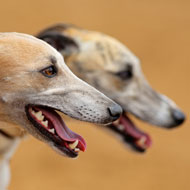Researchers create first anatomical catalogue of horses’ expressions
Researchers may have identified an undocumented facial movement.
Researchers from the University of Portsmouth have catalogued the first anatomically-based descriptions of equine facial behaviour.
By mapping how horses’ facial expressions communicate emotions such as playfulness and aggression, scientists hope to advance understanding of equine welfare, training and veterinary care.
The researchers used the Equine Facial Action Coding System to catalogue 805 facial displays across 22 distinct behaviours. The facial movements were linked to specific muscle actions to enable the scientists to apply precise and objective coding.
A new statistical tool was also used to analyse how the expressions linked to different social contexts.
The analysis revealed a clear set of facial cues to indicate an agonistic interaction. These cues could be used to indicate a horse’s aggressive intent, which could support veterinary professionals with avoiding conflicts.
An aggressive horse will flatten its ears, raise its inner brows, dilate its nostrils and lower its head.
If a horse is alert or investigating stimuli, it will often hold its ears forward and adducted. It will adjust its head for improved sensory input (such as holding it upright) and may be seen to blink more often.
In contrast, a friendly horse appeared to exhibit more neutral facial expressions during interactions.
This contradicts the traditional belief that a horse holding its ears forward is displaying a positive emotion. Instead, researchers suggest a lack of facial movement is more indicative of a good mood.
A playful horse, however, expressed a more dynamic range of facial movements. This can include depressed lower lips, raised chins, wide-open mouths, rotated and flattened ears, increased visibility of eye whites and noses pushed forward.
Researchers suggest a link between some playful horse expressions and the open-mouthed play faces of primates and carnivores. They believe this may indicate a deep-rooted evolutionary basis for the behaviours across mammalian species.
The analyses may also have revealed a previously undocumented facial movement, involving the platysma muscle.
Designated AUH21, the movement causes the side of a horse’s face to tighten, highlighting the underlying structures. Previously only observed in humans and gibbons, the new expression could enhance cross-species comparisons and support the assessment of equine emotional states.
Leanne Proops, associate professor in animal behaviour and welfare at the University of Portsmouth, said: “This work is a game-changer for anyone working with horses,
“It gives us a new lens through which to view and interpret their behaviour, ultimately leading to better care and stronger human-animal relationships.”
The full database and the researchers’ analyses can be found here.
Image © Shutterstock



 The Greyhound Board of Great Britain has published new vaccination guidance, with all greyhounds registered from 1 January, 2027 required to have the L4 leptospirosis vaccination, rather than L2.
The Greyhound Board of Great Britain has published new vaccination guidance, with all greyhounds registered from 1 January, 2027 required to have the L4 leptospirosis vaccination, rather than L2.